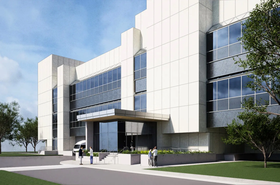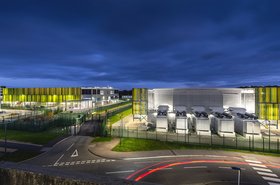There's never been a better time to be in the data center business in the UK. Fueled by the nation's ambitious AI Opportunities Action Plan, data centers are now positioned as vital "engines of the AI age." This recognition, underscored by the government's £14 billion ($18bn) investment into large data centers and technology hubs, and the designation of data centers as part of the UK's Critical National Infrastructure, highlights their growing necessity in the functioning of an AI-driven society.
However, despite the benefits of widespread AI adoption, the growth of AI infrastructure is continuing to fuel concerns about its environmental impact. For example, by 2028, analysts predict AI will account for 19 percent of data center power demand, escalating the need for resources such as energy and water, with data center energy usage set to double by 2026.
Studies comparing ChatGPT and Google search further illustrate the energy demands of AI. While a single search for the first requires 2.9 watt-hours of electricity, the latter only demands 0.3 watt-hours. Addressing the environmental impact of AI infrastructure will be a defining challenge in the coming years, requiring innovation and responsible resource management.
The pressure is now on for AI-driven organizations and governments to address the environmental impact while fostering innovation. So, how can the UK empower data center sustainability in this computationally intensive future?
Cool it: The potential of liquid cooling solutions
The future of the UK's AI ambitions hinges on embedding innovative sustainable solutions into the country's AI backbone. Data centers are at the epicenter of this challenge. One key strategy is leveraging liquid cooling solutions.
Research by McKinsey shows that cooling accounts for nearly 40 percent of data center energy consumption, making the use of efficient cooling practices a vital method of reducing data center footprint. Traditionally, air-cooling methods have been used in data centers to maintain optimal operating temperatures. However, they only capture 30 percent of the heat generated by the servers in data centers. So, data centers that rely solely on air-cooling methods will struggle to keep up with the future needs of high-performance and heat-intensive AI applications.
Solutions such as liquid immersion and direct-to-chip cooling will be necessary due to their superior heat transfer capabilities, which dissipate heat more efficiently. Immersion liquid cooling captures 100 percent of heat produced by servers, translating to environmental benefits like lower carbon emissions, but also performance and operational advantages, such as greater efficiency and cost savings.
Liquid cooling solutions are also advantageous for scaling AI. They allow data centers to better handle the increasing power and server density of AI infrastructure compared to conventional cooling systems. This maximizes existing infrastructure and reduces the need for costly expansions, which is crucial for the UK's new AI Growth Zone plan and strategic consideration of limited land resources.
Skill development: Empowering the data center workforce
To achieve a sustainable future for data centers in the AI era, upskilling the workforce is key. According to a report by LinkedIn, global demand for green talent increased by 11.6 percent from 2023 to 2024, but the supply only grew by 5.6 percent. This skills gap is projected to worsen, reaching 101.5 percent by 2050 if the current trend continues.
This skills gap could severely limit the scale at which data centers can improve their sustainability. To truly drive change, data centers urgently need professionals with the expertise to implement and manage innovative technologies, such as liquid cooling. This includes in-depth knowledge of installation, operation, troubleshooting, understanding the intricacies of dielectric fluids, server compatibility, and leak detection to ensure safe and efficient operation.
Proficiency in energy management software is also important. This involves data analysis skills to identify areas for optimization and the ability to implement energy-saving strategies. Additionally, with a growing focus on sustainability, data center professionals must be able to evaluate and select hardware based on energy efficiency, environmental impact, and lifecycle considerations.
Investment in workforce development through training programs, industry-recognized certifications, and partnerships with educational institutions and technology partners will provide access to resources and best practices.
A united front: Collaboration for a greener digital landscape
Achieving data center sustainability requires collaboration. Industry leaders, policymakers, and technology providers must unite for a better, more sustainable future. As governments discuss AI regulations, open dialogue about tools, approaches, and research and development is essential.
Choosing the right organizations to partner with makes the difference. Partnerships play a crucial role in sharing knowledge about sustainable solutions and supporting the widespread adoption of - and upskilling in - energy-efficient cooling technologies. This collaboration is especially vital as the pressure of sustainability requirements continues to rise.
Sustainability should be viewed not just as a compliance exercise, but as a strategic imperative that can drive innovation, reduce costs, and enhance competitiveness. By embracing liquid cooling technologies, investing in workforce development, and fostering a collaborative spirit, the UK can position itself as a leader in the AI era while reducing its environmental impact.








